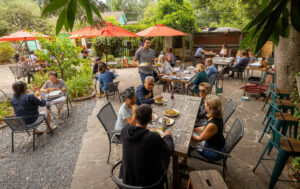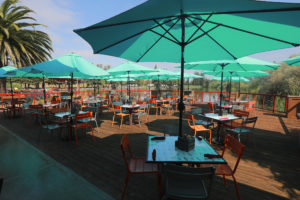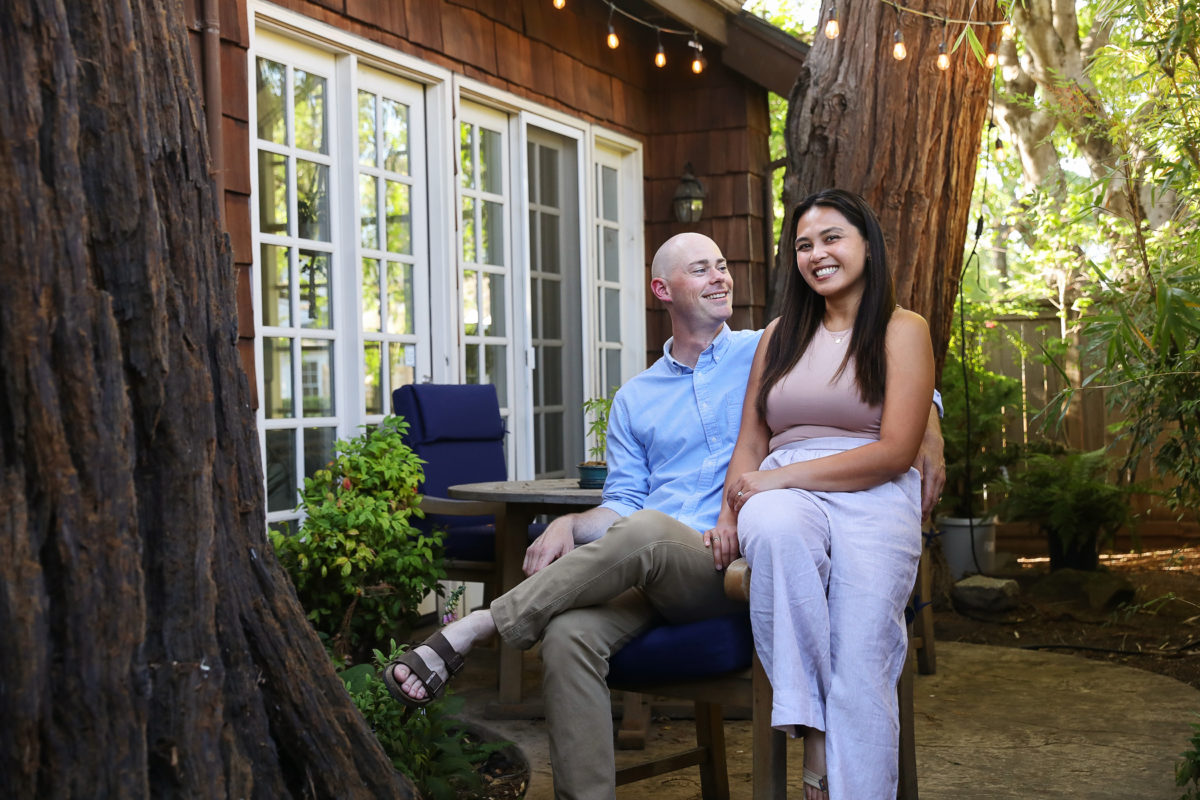Inside a crowded auditorium in southwest Santa Rosa, Greg Basurto heard his name called and stepped up to a raffle drum filled with hundreds of numbered cards. The stakes were high. In all likelihood, his selection would determine whether he and his wife, Stephanie, could finally afford to set down roots in Sonoma County, or if they would have to pick up and move their young family away from their hometown of Healdsburg.
It was October 2019, and the couple was living with relatives on the west side of town after being priced out of an apartment in Rohnert Park years earlier. Greg was working in the warehouse at the Russian River Brewing Company, while Stephanie was enrolled at Santa Rosa Junior College and held down a job at O’Reilly Auto Parts.
With a six-month-old daughter, Shelby, and a son, Erich, approaching elementary school age, the couple was ready for a home of their own. But rising housing costs kept that plan out of reach. They considered moving out of state — Montana, or maybe Oregon — though Stephanie hated the thought of leaving behind the kids’ grandma and their aunts and uncles.
At the auditorium, Greg needed to pull a 48 or lower—the number of affordable townhomes planned for an empty plot of land south of Roseland in Santa Rosa. If he did, one of the properties was his to buy. He picked a card and immediately called Stephanie.
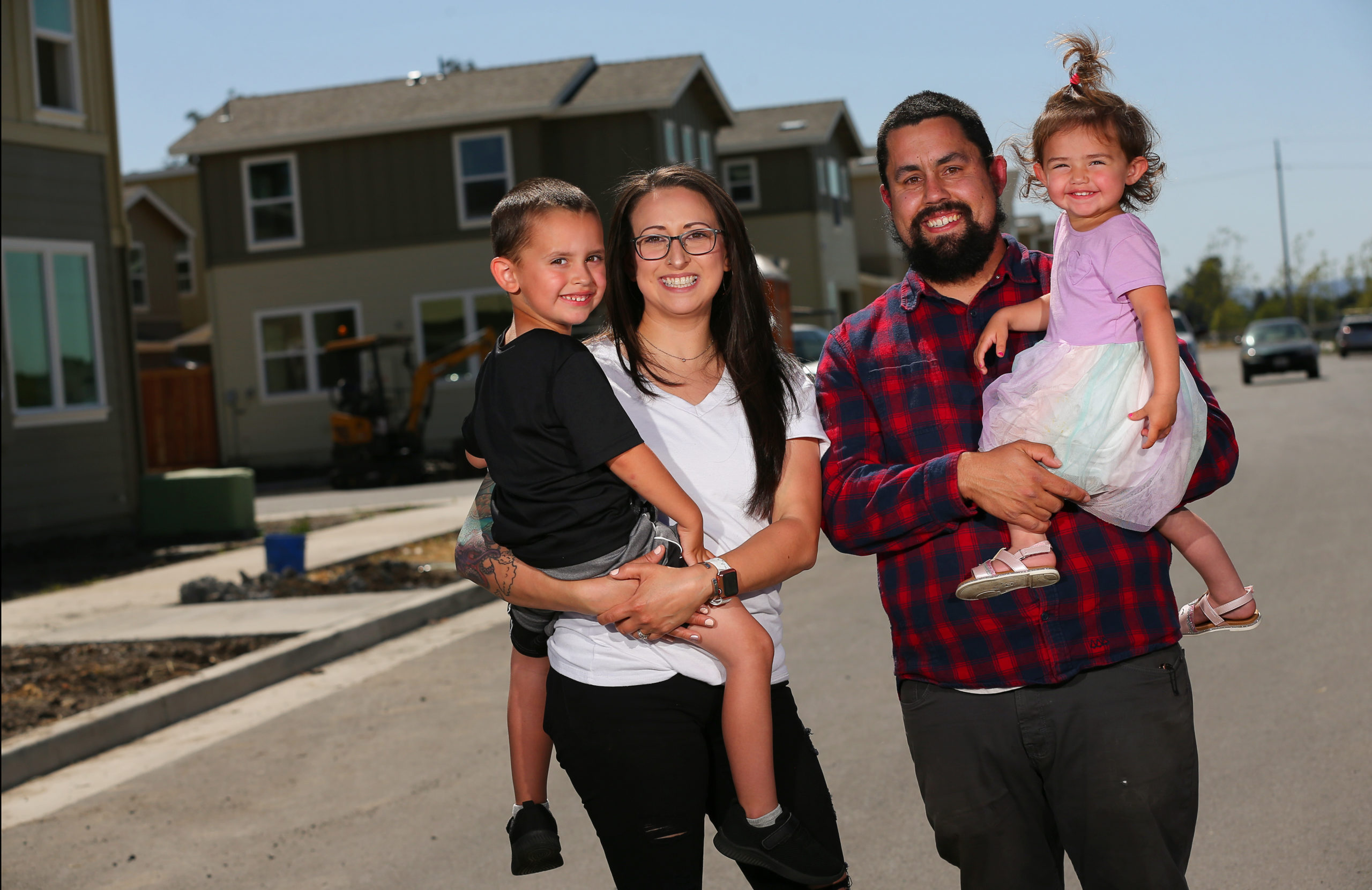
When the coronavirus pandemic upended everyday life in early 2020, scores of residents from across the Bay Area and California, now liberated from the office by remote work, eyed more living space and a retreat from costly urban centers. Sonoma County — with its natural beauty, slower pace of life, and relatively cheaper real estate prices — proved a prime destination. By summertime, a wave of new residents began pouring into Wine Country, sending home values soaring.
That heavier pressure on the local market has only grown as the pandemic drags on, exacerbating the county’s long-standing housing shortage as it continues to rebuild after a string of devastating wildfire seasons. And it has called into question whether the county can again be a place where working families like the Basurtos are able to afford to own a home, or whether they find themselves squeezed out.
“We’ve had an affordability crisis in the North Bay now for some time, and the pandemic is making it worse,” says Larry Florin, CEO of Santa Rosa nonprofit developer Burbank Housing. “It’s putting home ownership further out of reach for the workforce in Sonoma County.”
In March 2021, the median price of a single-family home in Sonoma County hit $767,000, according to data from real estate agent Rick Laws. That represents a 13% spike from $678,910 in March 2020, the last month before the pandemic took full hold in the region. By May 2021, it was up to $780,000.
At the same time, local rents stayed relatively flat last year, suggesting new homebuyers outpaced arriving renters. But the county’s rental market may not be spared for long, as listings have begun to tick up in price in 2021. In May, the monthly cost of a two-bedroom apartment reached $2,010, a 3% increase since January, according to rental site Apartment List.
Early migration data, meanwhile, sheds light on the scope of the influx of new arrivals to Sonoma County. Last year, nearly 13,200 new households moved here, while around 9,900 households moved out, a net increase of about 3,330 families or individuals. That’s an almost 300% jump over 2019, according to change-of-address figures from the US Postal Service. Still, the influx came in the third straight year of overall population decline in Sonoma County following the 2017 fires — an unprecedented swing for the region.
Robert Eyler, an economist with Sonoma State University who compiled the data, found that Marin, San Francisco, San Mateo, Los Angeles, and Contra Costa, respectively, were the top counties from which people moved to Sonoma County in 2020.
The new households make up just a fraction of the 189,000 in total in the county, Eyler noted. But if that influx continues years beyond the pandemic, he says, it could have profound impacts on the region’s population and workforce. Census reports coming next year could begin to illuminate those potential demographic shifts.
“Are we losing service workers and gaining professional workers, who’ve got a master’s degree and are coming here to work from home?” Eyler says. “Even if we knew who these people are, we don’t know what their intentions are — whether they are workers, or retirees, or people with kids.”
Colin and Rizza Celio had been considering a move to Sonoma County for a few years by the time the pandemic hit. The couple, both in their early 30s, was living in a cramped apartment in Burlingame, south of San Francisco, near their jobs in the tech industry. Once it seemed likely that remote work was here to stay, Rizza scoured Zillow and found a two-bedroom house for rent in the stately McDonald Avenue neighborhood in Santa Rosa.
The couple was instantly taken by the home’s extra space and the neighborhood’s historic charm. On top of that, it was listed for thousands of dollars less than similar properties in Burlingame. They moved in last July, furnishing the home with antiques found on trips to Healdsburg and Sebastopol.
“The apartment wasn’t home — it was just, this is where we are,” Colin says. “This has become much more of a home.”
Colin grew up in the northern Napa Valley region, where his parents still live. He remembers coming to Santa Rosa for birthday parties at Snoopy’s Home Ice skating rink and trips to Goat Rock Beach on the Sonoma Coast. Rizza, who was born in the Philippines and grew up mainly in San Francisco, fell in love with the area after she and Colin started dating.
“I used to be a city girl, just gallivanting around San Francisco, being close to everything,” she says. “And then when we met, he was like, let’s go hiking, let’s explore. So we ventured out a lot in the North Bay. …It was like, okay, he’s easing me into the country life. Now, I’m like, do we have to go to San Francisco?”
The pair hopes to eventually purchase a house and start a family in the county, though they know they could be up against a crowded field of buyers like themselves.
David Rendino, a real estate agent in Cotati, says he’s never seen the local home market in such turmoil. Record low interest rates, combined with a severe lack of available properties and well-heeled buyers willing to pay hundreds of thousands of dollars above the asking price are fueling an ever-intensifying rush for homes.
“There’s a lot of anxiety in the real-estate community right now,” Rendino says. “Agents feel it coming from their clients, and they internalize it … Buyers get to the point where they’re going to just write an offer on the next property, sight unseen — they don’t really care about value. They just want to be done. They want to be in their home.”
With the work-from-home revolution appearing permanent, Rendino sees few signs the area’s home market will stabilize any time soon. And he expects the higher sale prices may well be here to stay.
The Celios are willing to wait and see. For now, they’re enjoying getting to know their new neighborhood, going for drinks at Willi’s Wine Bar and taking walks along the wide streets lined with ginkgo trees that turn a brilliant yellow in fall. Colin recently joined a bocce league in St. Helena with his dad, and Rizza has made friends at the recently reopened Cal Skate rink in Rohnert Park, her new “pandemic hobby.” Once they do set down roots, the couple looks forward to their children calling Sonoma County home.
“I feel like you have a community up here that’s a little bit closer-knit than you get in certain areas of the Bay Area, where it’s so widespread, and everyone’s doing their own thing,” Colin says. “You don’t really get that feeling as much [elsewhere], and I like that small-town feeling.”
Santa Rosa Mayor Chris Rogers aims to put a dent in the region’s housing shortage by reimagining that small-town atmosphere for his city’s downtown. Since he was elected to the City Council in 2016, Rogers, 33, has become a leading local voice calling for more home construction. In Santa Rosa, that includes throwing his support behind a half-dozen proposed multi-story apartment buildings, amounting to nearly 700 new units in the downtown area.
Rogers foresees these developments as home to a diverse community of young professionals, who can meet for dinner after work, then walk to a nearby art exhibit or concert. It’s a future that could be accelerated by the pandemic, he says, as companies embrace remote work and those in their 20s and 30s seek out a more affordable alternative to North Beach or the Mission District.
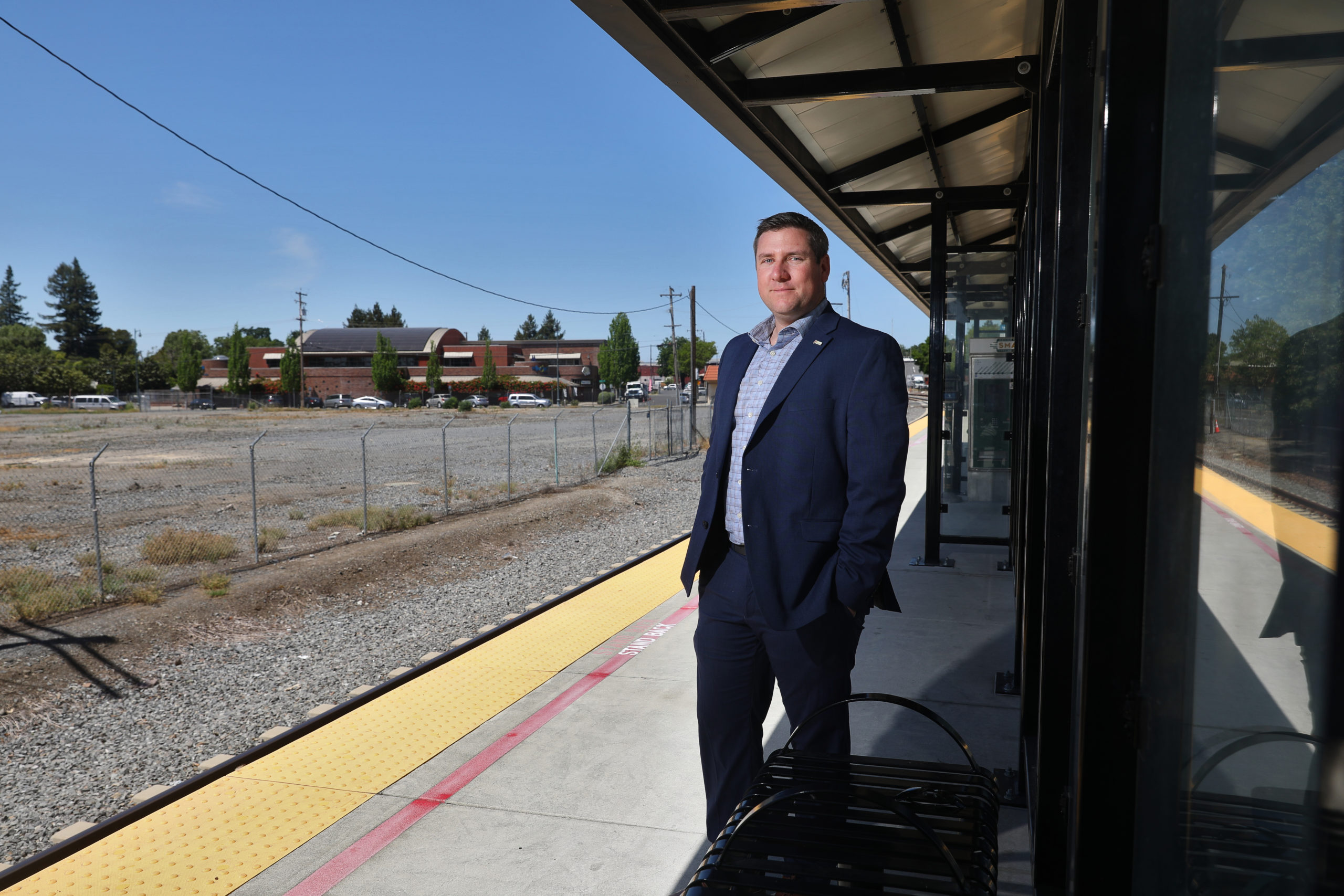
“Santa Rosa is very well-positioned to catch many of those tech employees that can’t afford to live in San Francisco, or want a higher quality of living coming out to an area where they’re a stone’s throw away from both the beach and some of the best hiking trails,” Rogers says. “I think if I can use one word to describe what we’re looking for, it’s vibrancy. We’re trying to create vibrancy and attract people into our community.”
Walking from Old Courthouse Square down Mendocino Avenue one afternoon in early May, Rogers pointed out a few of the projects that could remake the city’s modest skyline, including a proposed 8-story, retail and residential development planned for a city-owned parking lot just off Mendocino Avenue.
Rogers is quick to use wonky jargon like “catalytic project” and “adaptive reuse,” to advocate for the need for environmentally-friendly developments and building near public transportation. He highlighted a handful of projects slated to go up near the SMART tracks by the city’s historic Railroad Square neighborhood, as well as Catholic Charities’ Caritas Village development, which will include 128 affordable units and a multiservice homeless center to serve the city’s roughly 1,500 unsheltered residents.
I think if I can use one word to describe what we’re looking for, it’s vibrancy. We’re trying to create vibrancy and attract people into our community. — Santa Rosa Mayor Chris Rogers
To realize the more urban vision of the city’s future, Rogers says, officials first need to do their part to make it easier for developers to build. Last year, the city council aimed to do that by loosening height restrictions in the downtown area, allowing additional units on a single lot. The city council also put $48 million in federal disaster aid and PG&E wildfire settlement funds toward housing construction.
California developers have complained for years about the challenges of getting a project across the finish line, citing the burden of permitting fees, the high cost of labor and materials, limited available land and stringent environmental reviews.
In the North Bay, that means it can be difficult to find investors who believe they can make a project “pencil out” — developer-speak for turning a profit. The problem for Sonoma County is also one of the main draws for new residents fleeing from costlier parts of the Bay Area — home prices and rents here are well below much of the rest of the region, and financers stand to see lower returns after recouping building costs. Instead, they might turn to downtown Oakland or Mountain View.
“We’re in competition with the rest of the Bay Area that’s hungry for housing,” says Keith Woods, chief executive of the North Coast Builders Exchange, a Santa Rosa-based trade group.
Neighborhood opposition to new development is arguably an even taller obstacle to home-building in Sonoma County. Enter Generation Housing, a fledgling advocacy group with the goal of convincing local leaders and residents that more housing, even in their own backyards, is in everyone’s best interest. “People show up at city council meetings and supervisors’ meetings to say no to things. People show up when they’re upset,” says Jen Klose, Generation Housing’s executive director and a former Santa Rosa City Schools trustee. “People don’t often show up to say yes.”
The nonprofit aims to replace entrenched narratives about housing construction, such as concerns about urban sprawl and preserving neighborhood character, with arguments for green projects that teachers, nurses, firefighters and farmworkers — the backbone of the local community — can actually afford. The group works to survey various local industries, create pro-growth marketing campaigns, and put pressure on elected officials to adopt its policy recommendations and follow through on housing goals.
“I think most of our elected and appointed leaders are with us; I think they understand the importance of this,” Klose says. “But they do need political cover, they need folks backing them up and making decisions that might be unpopular with a particular loud group of people.”
One metric Klose keeps a close eye on is Sonoma County’s housing construction targets under a state framework which requires each municipality to permit a certain number of units for different income levels by 2023. According to an online tracker created by Generation Housing, just three of the county’s nine cities — Healdsburg, Petaluma and Rohnert Park — have so far met their upcoming permitting goals.
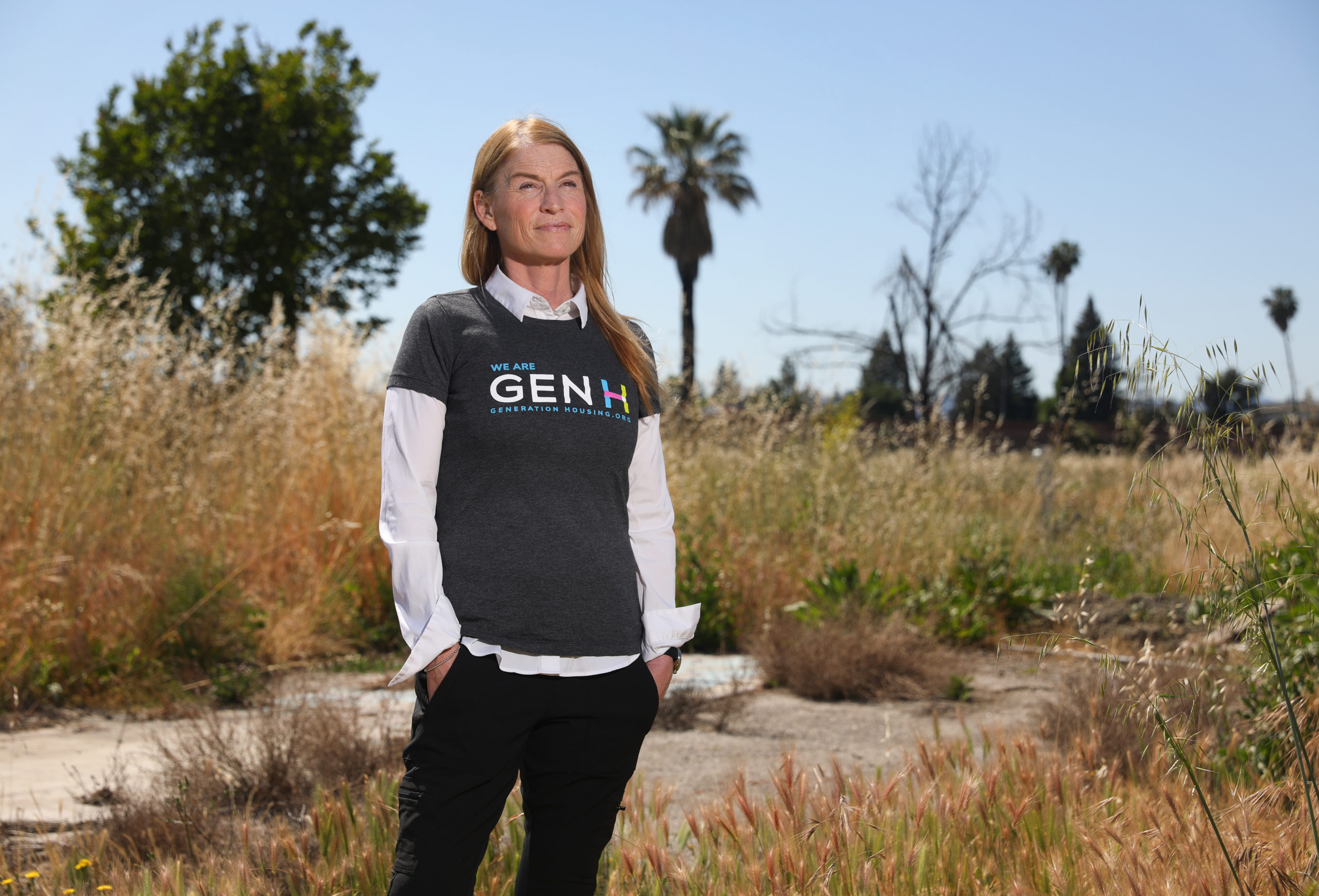
As most of the county has fallen behind reaching those targets, Rohnert Park in particular has pushed even further ahead, permitting a mix of nearly 1,500 new affordable and marketrate units, about 65% above its goal. A large chunk of that development has come in Rohnert Park’s University District, which is slated for 1,645 new homes and apartments by 2025.
In that expanding neighborhood, on former farmland east of Sonoma State University, Rohnert Park’s largest affordable housing project is under construction — a 218-unit complex with rents starting at $1,149 for a two-bedroom apartment. Just down Petaluma Hill Road, signs tucked among still-empty fields of mustard grass advertise rows upon rows of future single-family home developments.
“We have been really working hard to make sure that every single angle of our community is represented,” says Rohnert Park Vice Mayor Jackie Elward on the city’s push for housing. “I want other cities to look into what Rohnert Park is doing and take it as an example.”
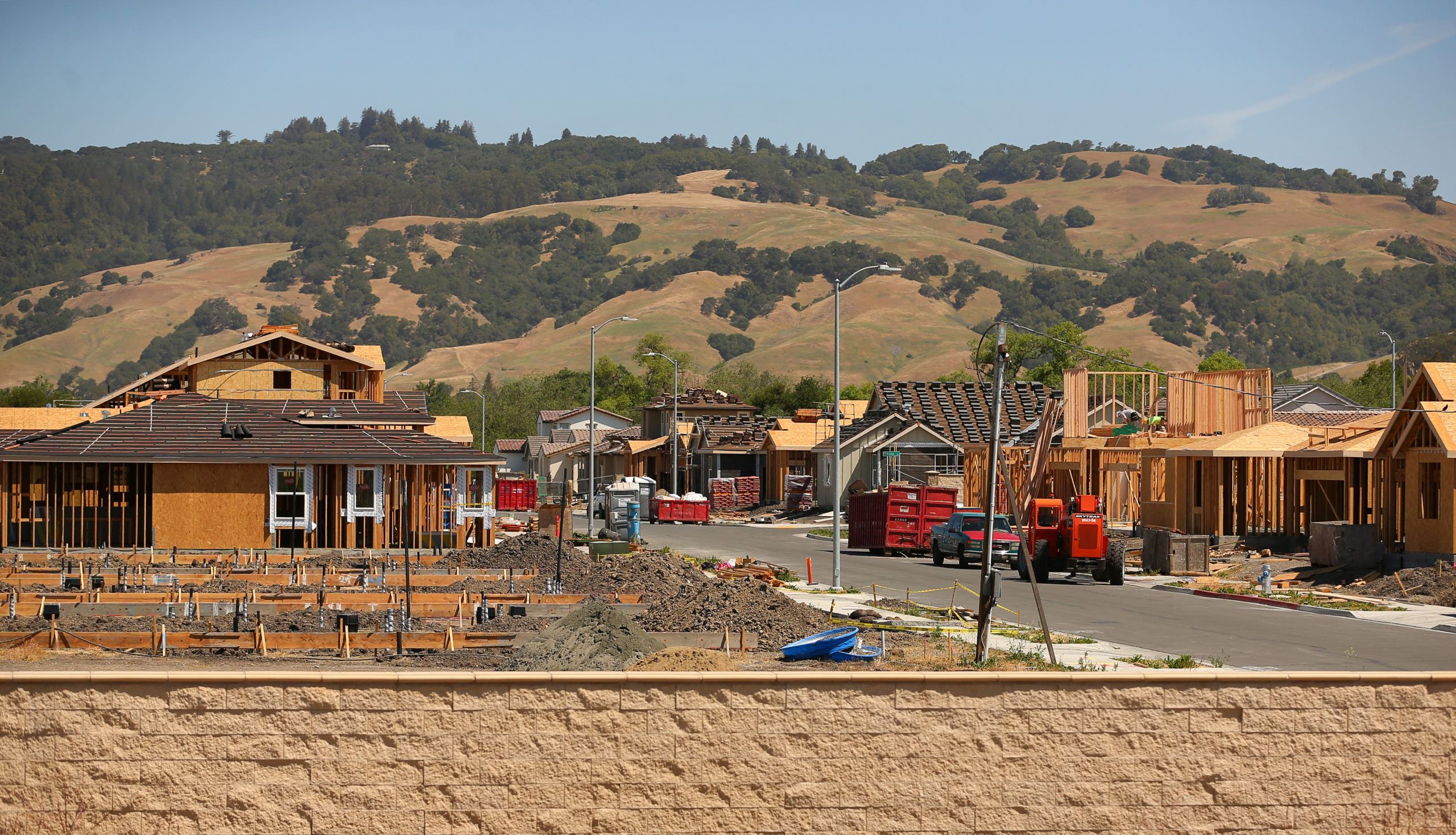
Santa Rosa’s newest residential blocks, meanwhile, are taking shape in the city’s southwest corner, in the form of 48 affordable “duet-style” townhomes on a small network of freshly-laid cul-de-sacs.
Greg and Stephanie Basurto first learned of the Lantana Homes project after hearing about an affordable home program by Burbank Housing, the nonprofit developer behind Lantana and many other income-limited projects in the county. The Basurtos found they met the income requirements to enter a lottery for the right to put a down payment on one of the units. Each of the 3-bedroom, 1,200-square-foot homes would be offered for around $250,000 to $350,000, less than half the cost of most properties in Sonoma County.
“The average home price is way out of our price range,” Greg says. “You can buy something that’s kind of reasonable, but then you can drop all this money just to fix it up.”
Latino homeownership rates continue to lag behind whites here in Sonoma County. And that is important because homeownership has been the single most important vehicle to build wealth. — Oscar Chavez, Chairman of Sonoma County’s Community Development Commission
Burbank Housing finances its affordable developments — projects whose renters or buyers typically make less than 60% of the North Bay’s median income — through a mix of federal tax credits and other public grants or subsidies. Its developments are currently home to almost 10,000 people spread across more than 70 rental communities and 1,000 townhomes in Napa and Sonoma counties. But many more homes are needed, as surging demand has forced the developer to cap its rental waiting list at 15,000 applications.
“There just simply isn’t enough funding,” says Larry Florin, Burbank’s chief executive. “And it doesn’t go as far when it costs more to build a single unit,” which can average $500,000 in Sonoma County, he said.
Roseland, the predominantly Latino neighborhood just to the north of Lantana Homes, has in recent years seen growing numbers of new and planned projects, including many homes and apartments for lower income workers. Oscar Chavez, Sonoma County’s assistant director of human services and chairman of the county’s Community Development Commission, the chief local housing agency, says those kinds of affordable projects, particularly homes for families, are needed for communities of color in the North Bay.
“Latino homeownership rates continue to lag behind whites here in Sonoma County,” Chavez says. “And that is important because homeownership has been the single most important vehicle to build wealth.”
Even so, new development in Roseland has sparked fears of gentrification for some. It has also raised concerns about why more affordable developments aren’t being built throughout the region.
Stephanie Manieri, director of programs at the nonprofit Latino Service Providers, says people who move into price-restricted homes in poorer parts of the county can end up locked into those living situations. As housing costs continue to rise, those residents often aren’t able to build enough equity to eventually move to areas with more opportunity, creating “pockets of poverty in neighborhoods that are already economically impacted for a lot of different reasons,” Manieri says.
The Basurtos felt they didn’t have the luxury to consider such long-term implications. Time was running out to find a home in Sonoma County.
“We just knew that if we didn’t get one of these homes, that we would have to have a serious talk as to where we were going to move our family,” Stephanie says. “And that would be a struggle, because my lifeline is here.”
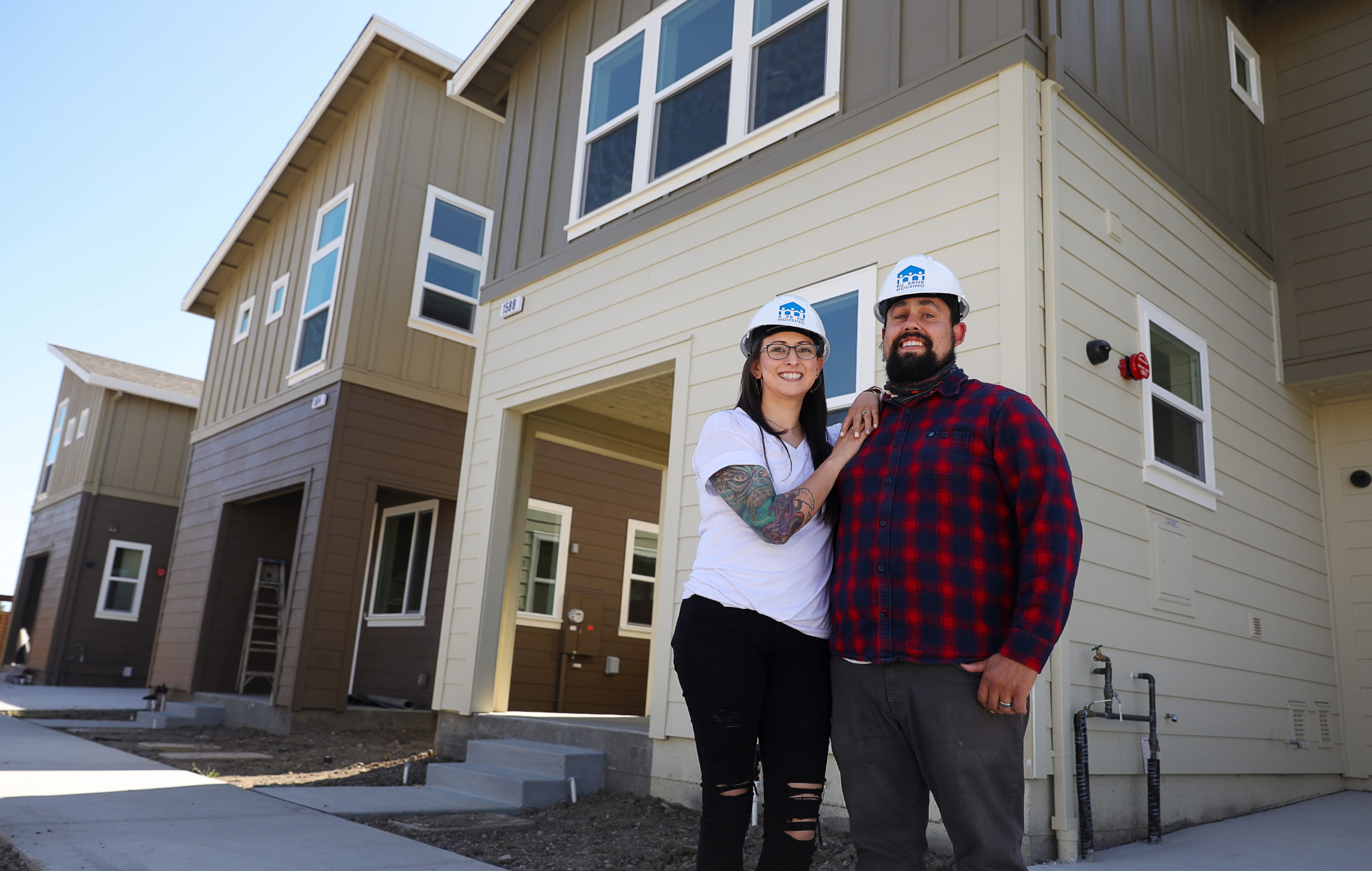
The struggle of growing numbers of local families seeking to buy homes, and the steady stream of work-from-home émigrés flocking to the North Bay, could serve as powerful motivation for officials to approve more housing of all kinds throughout the county. But just how much is needed remains an open question.
County officials have in the past put that number at 30,000 units between 2018 and 2025, while the state is ready to set the county’s next housing goal at 14,500 units from 2021 to 2031.
Generation Housing estimates the county needs at least 58,000 more units over the next 10 years, a seemingly daunting benchmark the group acknowledges would likely require widespread changes to current housing policy and significantly more funding to achieve.
We just knew that if we didn’t get one of these homes, that we would have to have a serious talk as to where we were going to move our family. And that would be a struggle, because my lifeline is here. — Stephanie Basurto, new homeowner
Jesús Guzmán, policy and advocacy director with Generation Housing, remains optimistic, pointing to the historic local building sprees in the ‘70s and ‘80s despite periods of inflation and stagnant economic growth. “It’s been done; we have a precedent set,” Guzmán says, noting he’d prefer to see denser, greener projects than those from decades ago.
Rogers, the Santa Rosa mayor, is confident builders will increasingly line up behind developments once the large-scale projects planned for the city’s downtown start to come online. But he was unable to say for certain whether such a flurry would meaningfully bring down housing costs across the board.
He points to disaster-relief funds earmarked for affordable developments, low-income unit requirements on new projects, and permitting changes making it easier to build in-law units as markers of progress on affordability. And he says he and his fellow council members are open to other ideas to spur cheaper housing options, such as potentially allowing duplexes in areas currently zoned for single-family homes.
“On the city council, you have seven voices that are really showing the political will of needing to build housing, needing to be welcoming to folks who are not currently in our community, and finding a way for the people who want to stay in our community to stay in our community,” Rogers says.
When Stephanie Basurto picked up her husband’s call after the housing lottery, she knew he wasn’t being serious when he said that he had “some bad news.” She told him to cut the act, and Greg informed her they were actually one of the 48 households out of more than 400 applicants who had won the right to buy a townhome at Lantana. “I mean, I was stoked,” Greg says.
With the Sonoma County housing market heating up during the pandemic, some of the Basurtos’ friends and relatives are now thinking of moving out of Healdsburg and other parts of the county. The couple counts themselves fortunate they won’t have to make that same choice. “It’s just a huge relief,” Stephanie says.
Florin with Burbank Housing stresses that townhomes like Lantana, which are cheaper to build and allow for much more density than single-family homes, are but one tool to address the local affordable housing shortage. He also sees options like in-law units and prefab, modular construction techniques as key potential solutions. But he admits it’s hard to overstate the impact of handing over the keys to the owners of a new townhome, most of whom are North Bay locals.
“People will start crying, and they’ll say things like, ‘I never in my wildest imagination believed I could own a home in this community,’” Florin says.
The Basurtos are set to move into their new home in July. They’re excited to enjoy the small backyard and happy that their kids each get to have their own bedrooms. Just as important, they’ll get to stay close to family, who will be on hand for move-in day.
“Get a barbecue and a big bottle of beer from work, three liters — everybody can have some,” Greg says.
“We’ll have somebody out here cooking up steaks or something, as a thank-you for helping us move in,” Stephanie says. “We’ll break it in right there.”
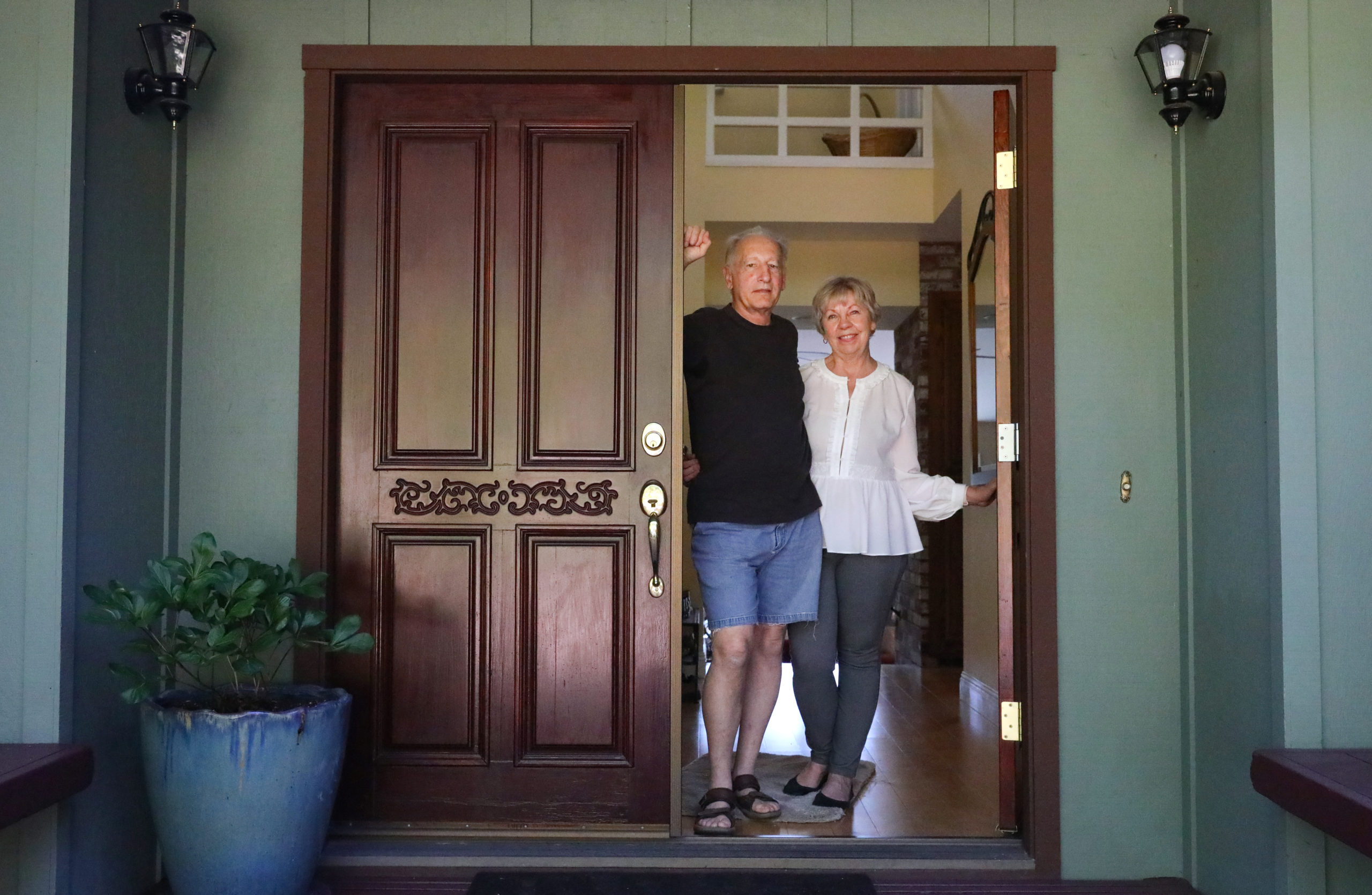
Leaving Sonoma County — and California
Jan Cregan lived in Sonoma County for nearly three decades before she ever considered leaving. Then came the 2017 blazes. Two of her daughters lost homes in the Tubbs fire, which also destroyed about two dozen houses in her own neighborhood above Rincon Valley in east Santa Rosa.
Even then, Cregan, who’s 67, counted it as a freak disaster. But 2019 brought the Kincade fire, forcing her to evacuate with her husband, Rich Steiner, 72. The next year, she was at home painting when a news report came on about yet another blaze that had ignited in Napa County and could be headed her way.
“I’m sitting here thinking about that and how we may have to evacuate again in the next day or two,” Cregan says of the 2020 Glass fire. “And it just kind of got to me that I don’t know as we age, that I have the stamina to be worried about that every year.”
Before peak wildfire season arrives this year, Cregan has convinced her husband to put their home on the market. They plan to move to Tennessee, where real estate is cheap and fire risk is low. But the couple is saddened to leave their friends and to sell the three-bedroom home, which overlooks acres of vineyards at the north end of Sonoma Valley. “I thought this was going to be my last house,” Steiner says.
In the wake of the 2017 North Bay fires, which destroyed some 5,300 homes in Sonoma County, the region’s population has fallen into a multiyear decline. That’s in large part due to those fed up with yearly evacuations and smoke-filled skies, as well as fire refugees whose homes were destroyed. Of the roughly 6,000 homes leveled by fire in the county since 2017, only about half have been rebuilt. That’s left a continued drag on the local housing supply, while also raising concerns about the risk of rebuilding in fire-prone areas.
In 2020, Sonoma County’s population again fell, this time by 1.5%, according to latest estimates, reflecting a broader trend throughout California. But officials cautioned last year’s dip could be an outlier, reflecting excess deaths and lower birth rates during the pandemic, rather than a mass outward migration.
Still, as interest in moving to Sonoma County is at a high, there remain plenty of people wanting out. Cregan says leaving for the South, where she was raised, will make it easier to afford retirement. She hopes her three kids and ten grandchildren in the North Bay will eventually join her in Nashville. On top of worsening fires exacerbated by climate change, she’s worried that California’s cost of living will only increase for future generations.
“It’s almost some kind of stroke of fortune that you can buy a house, and I don’t want that for the grandkids,” she says. “I want them to be able to go to school, get a job and buy a house like it’s normal. And it’s not here — it’s a feat.”
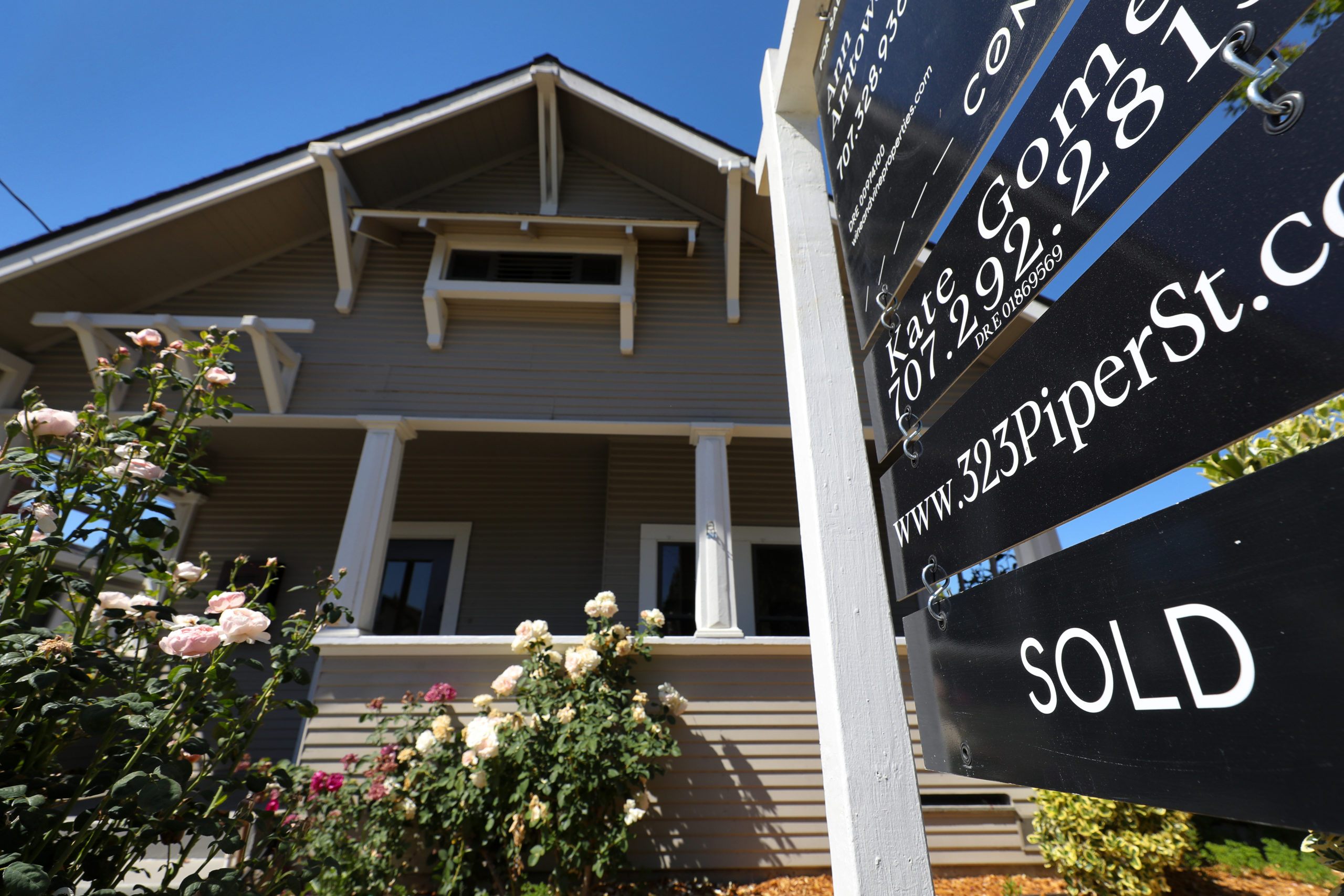
Too charming for its own good?
In few other North Bay cities is it costlier to buy a home than in Healdsburg, where the median price of a single-family house hit $1.45 million in May 2021. Situated at the heart of three of the region’s premier wine-growing regions, Healdsburg has long attracted moneyed visitors. But now, without an office to report to, many are happy to make the Wine Country destination a permanent home.
Jim Heid, owner of CraftWork Healdsburg, a new coworking space just north of the Healdsburg Plaza, says about a third of his customers since reopening under coronavirus restrictions are newcomers to the area. At CraftWork, many of these ex-urban professionals have found a flexible office not unlike the ones they left behind in the city.
On a Thursday afternoon in late April, around a dozen “solopreneurs” sat before laptops across a semi-open floor plan with tastefully minimalist decor. A small kitchen was stocked with a healthy selection of canned sparkling water, while an outdoor backyard accented by strings of patio lights sat ready for happy hour.
Heid, a landscape architect who has advised the city on municipal development projects, said the newcomers have brought a new energy to the city as it recovers from the pandemic. He highlighted new shops moving into once-empty storefronts along the leafy downtown plaza, as well as an upcoming dining and events center backed by upscale farm-totable restaurant SingleThread and the owners of San Francisco arts incubator Saint Joseph’s Arts Society.
“Young, entrepreneurial people are fixing the homes up, they’re taking an investment in the community and bringing in fresh ideas and energy,” Heid says. “I joke about what I call my barometer stroller index — how many strollers are on the street on a daily basis, and it’s just phenomenal. We see strollers, skateboards, electric bikes; it has a very European feel.”
Stephen Sotomayor, Healdsburg’s housing administrator, is quick to acknowledge opportunities for economic development as new demographics move to the area. But he says an increasing pressure on the local home market may be unavoidable, especially in light of a voter-approved ordinance limiting market-rate development to 90 total units every three years.
A remote-work future could also further drive demand for vacation rentals and second homes in the area. That in turn may incentivize property owners to take more homes off the market and potentially spur a run on the few available properties by outside investors, concerns raised by residents and officials in other North Bay cities that have become tourist hot spots, including Sonoma.
“One of the things that can be challenging for a town like Healdsburg is that you can almost become a ghost town in the sense that the charm that made you a destination is also pricing out the locals that live there,” Sotomayor says.





